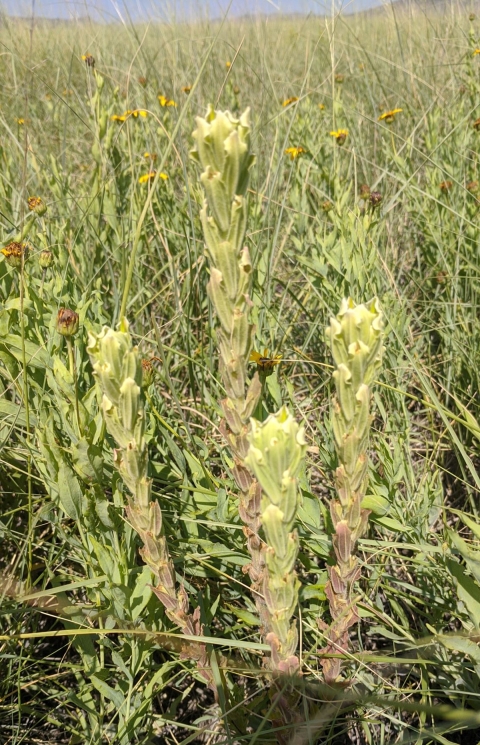After reviewing the best available scientific and commercial information, the U.S. Fish and Wildlife Service has determined that swale paintbrush is in danger of extinction throughout all its range and will be granted federal protection under the Endangered Species Act. The aim of the listing status is to recover the species to a point where it no longer needs federal protection.
To prevent the collection of swale paintbrush, the Service will not designate critical habitat, as that would provide precise plant locations, increasing the risk of plant removal, seed gathering and habitat damage from illegal collectors.
“To help bring swale paintbrush back from the verge of extinction, we are working with conservation partners in the United States and Mexico,” said Regional Director Amy Lueders. “We appreciate their help. Partnerships make protecting this vulnerable, rare plant possible.”
The swale paintbrush (Castilleja ornata) is part of a unique ecosystem found in the extreme southwest corner of New Mexico, barely stretching into the United States. The species historically grew at many locations in Hidalgo County, New Mexico and in the Sierra Madre Occidental mountain range in the states of Chihuahua and Durango in Mexico. Currently, swale paintbrush is only known to occur at one site in Hidalgo County.
Swale paintbrush is an annual flowering plant that grows at mid to upper elevations in seasonally wet grasslands. This plant species is root hemiparasitic, meaning it obtains extra water and nutrients from surrounding plants. Swale paintbrush produces nectar and supports pollinators. Its flowers are not actually petals but are modified leaves known as bracts. Due to its bright yellowish bracts, swale paintbrush is also called glowing Indian paintbrush. As the plant ages, the bracts turn from yellow to deep red.
“Almost everything you love is made of plants,” said Katie Sandbom, biologist at New Mexico’s Ecological Services Field Office. “They create habitat and support wildlife and pollinators. Rare plants, such as the swale paintbrush, make New Mexico’s biodiversity amazing.”
Swale paintbrush's historic range has been drastically reduced by development, conversion to agriculture, intensive grazing pressure and water diversions. In New Mexico, the largest threat to this species is disruption of its lifecycle, which leads to seedbank depletion. Potential sources of this disruption include surface disturbance, drought, fire, grazing, trampling, inundation, or vegetative competition if they occur during the swale paintbrush's growing season. Given this plant's reliance on its seedbank, it is especially vulnerable to illegal collection.
“We want to find more of swale paintbrush and need citizen scientists to let us know when they spot them,” said Sandbom. The public is encouraged to report swale paintbrush sightings to the U.S. Fish and Wildlife Service, New Mexico Ecological Services Field Office at katie_sandbom@fws.gov.
Supporting materials used in preparing this rule, such as the species status assessment report, are available at regulations.gov (search for Docket No. FWS-R2-ES-2022-0173) or from the New Mexico Ecological Services Field Office. This rule goes into effect Jan. 6, 2025.




